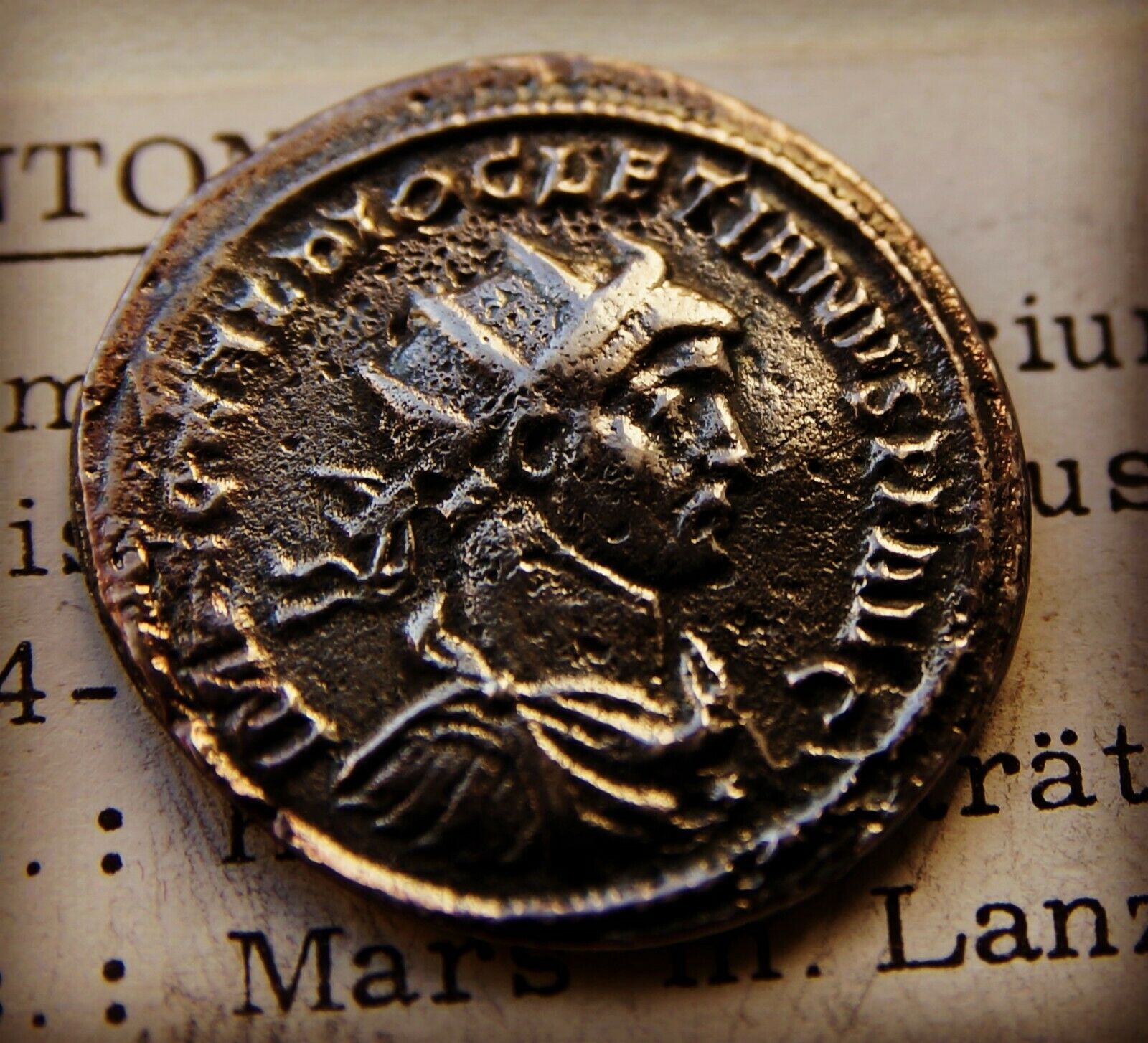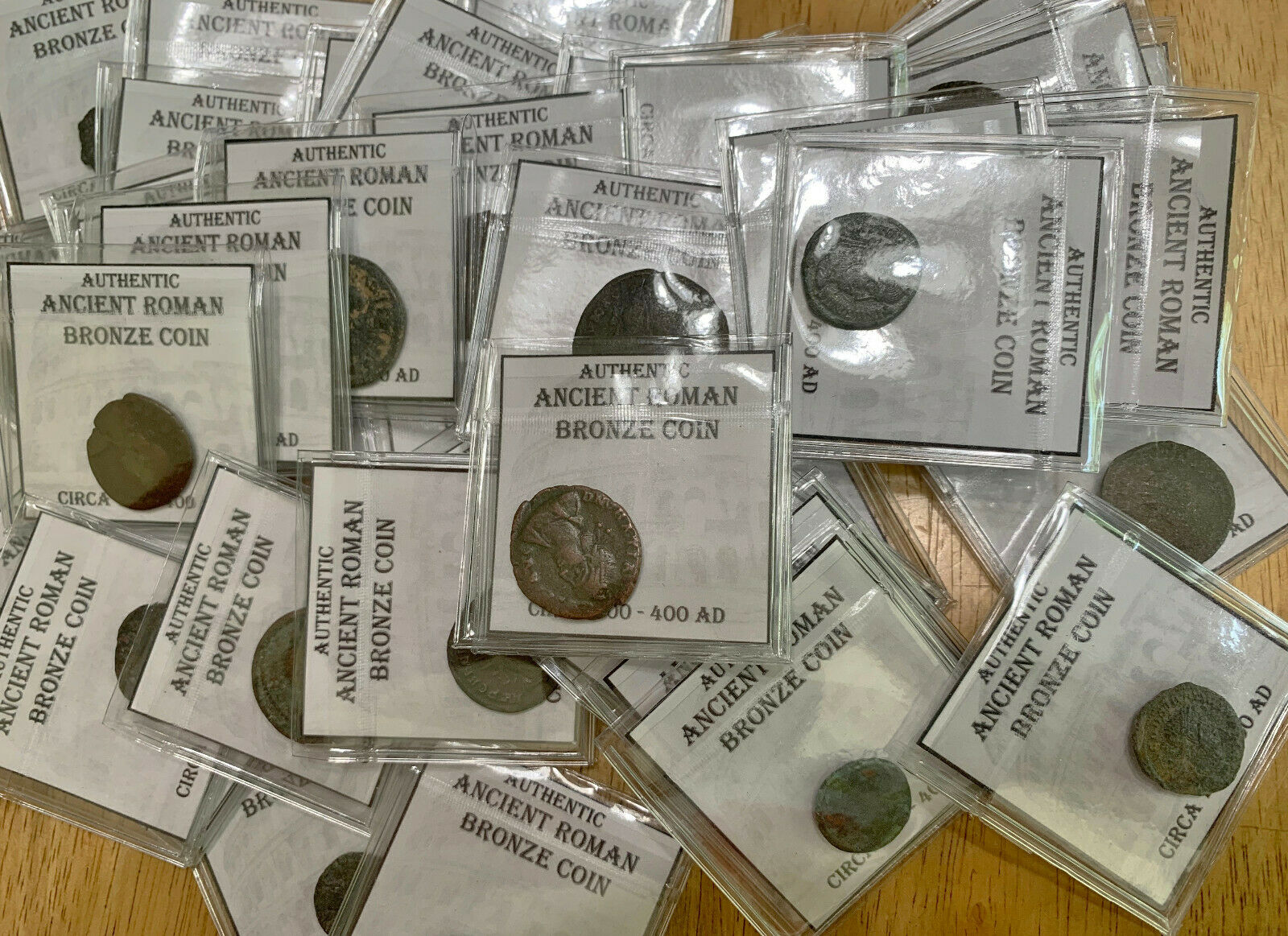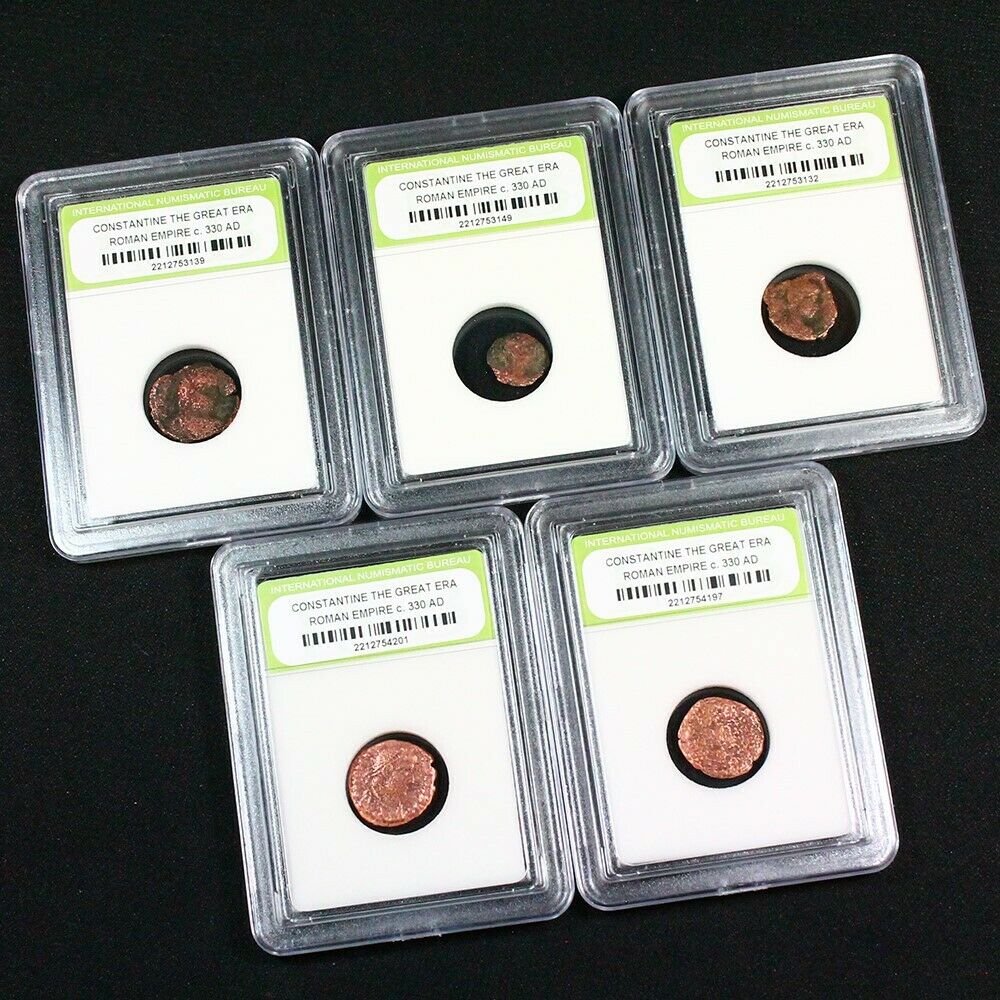-40%
!!! Rare collection of ancient roman coins
$ 3.43
- Description
- Size Guide
Description
!!! Rare collection of ancient roman coinsRoman currency for most of Roman history consisted of gold, silver, bronze, orichalcum and copper coinage. From its introduction to the Republic, during the third century BC, well into Imperial times, Roman currency saw many changes in form, denomination, and composition. A persistent feature was the inflationary debasement and replacement of coins over the centuries. Notable examples of this followed the reforms of Diocletian. This trend continued into Byzantine times.
Due to the economic power and longevity of the Roman state, Roman currency was widely used throughout western Eurasia and northern Africa from classical times into the Middle Ages. It served as a model for the currencies of the Muslim caliphates and the European states during the Middle Ages and the Modern Era. Roman currency names survive today in many countries (e.g., the Arabic dinar (from the denarius coin), the British pound and Mexican peso (both translations of the Roman libra)).
The manufacture of coins in the Roman culture, dating from about the 4th century BC, significantly influenced later development of coin minting in Europe. The origin of the word "mint" is ascribed to the manufacture of silver coin at Rome in 269 BC near the temple of Juno Moneta. This goddess became the personification of money, and her name was applied both to money and to its place of manufacture. Roman mints were spread widely across the Empire, and were sometimes used for propaganda purposes. The populace often learned of a new Roman Emperor when coins appeared with the new Emperor's portrait. Some of the emperors who ruled only for a short time made sure that a coin bore their image; Quietus, for example, ruled only part of the Roman Empire from 260 to 261 AD, and yet he issued two coins bearing his image. The Romans cast their larger copper coins in clay moulds carrying distinctive markings, not because they did not know about striking, but because it was not suitable for such large masses of metal.
Roman adoption of metallic commodity money was a late development in monetary history. Bullion bars and ingots were used as money in Mesopotamia since the 7th millennium BC; and Greeks in Asia Minor had pioneered the use of coinage (which they employed in addition to other more primitive, monetary mediums of exchange) as early as the 7th century BC. Coinage proper was only introduced by the Roman Republican government c. 300 BC. The greatest city of the Magna Graecia region in southern Italy, and several other Italian cities, already had a long tradition of using coinage by this time and produced them in large quantities during the 4th century BC to pay for their wars against the inland Italian groups encroaching on their territory. For these reasons, the Romans would have certainly known about coinage systems long before their government actually introduced them.
The reason behind Rome's adoption of coinage was likely cultural. The Romans had no pressing economic need, but they wanted to emulate Greek culture; they considered the institution of minted money a significant feature of that culture. However, Roman coinage initially saw very limited use.
The type of money introduced by Rome was unlike that found elsewhere in the ancient Mediterranean. It combined a number of uncommon elements. One example is the large bronze bullion, the aes signatum (Latin for signed bronze). It measured about 160 by 90 millimetres (6.3 by 3.5 in) and weighed around 1,500 to 1,600 grams (53 to 56 oz), being made out of a highly leaded tin bronze. Although similar metal currency bars had been produced in Italy and northern Etruscan areas, these had been made of Aes grave, an unrefined metal with a high iron content.
Along with the aes signatum, the Roman state also issued a series of bronze and silver coins that emulated the styles of those produced in Greek cities. Produced using the manner of manufacture then utilised in Greek Naples, the designs of these early coins were also heavily influenced by Greek designs.
The designs on the coinage of the Republican period displayed a "solid conservatism", usually illustrating mythical scenes or personifications of various gods and goddesses




















